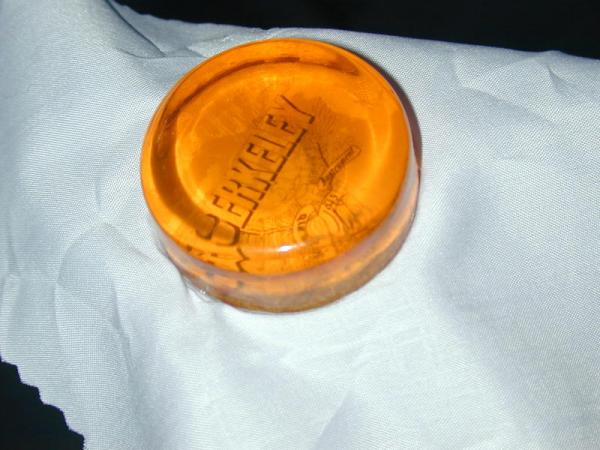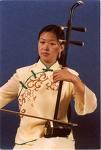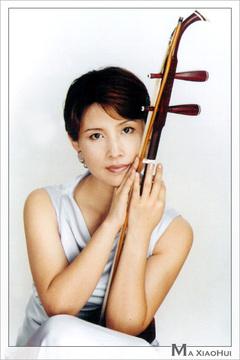 |
 |

Erhu - Chinese Traditional Musical Instruments
Erhu - Bowed String Instrument
The Erhu has a small body and a long neck. There are two strings, with the bow inserted between them. With a range of about three octaves, it's sound is rather like a violin, but with a thinner tone due to the smaller resonating chamber. In the 2nd orchestra they are usually divided into 1st and 2nd parts. The Erhu first appears about 1104 AD during the Song Dynasty. We bought ours in Zhengzhou in 1999. It hangs on the wall in our Great Room. You often see blind men playing this instrument in some of the big cities. I always enjoyed listening and gave them money for their efforts. Er is two in Chinese.
The Chinese 2-stringed, vertical fiddle has a history of more than 500 years. It started to be popular in Southern China during the Sung Dynasty (960-1279 AD), which gave it another name "Nan-hu" (the word "south" pronounced in Chinese as "Nan"). Erhu is still the most popular bowed instrument in today's Chinese music. An erhu is quite different from a western fiddle. There is a vertical post with a fingerboard, which goes through the sides of a resonator at its base. This resonator is covered with a piece of stretched snakeskin (python), which results in a unique "whining" tone color of the instrument. The bow for the erhu is placed between its two strings. Traditionally the two strings are made of silk, although metallic strings are used as well. The player of an erhu usually sits, and the erhu is placed on his left upper thigh in front of his left hip. The instrument is played by moving the bow horizontally through the two vertical strings. Erhu's range spans about three octaves. It has some of the qualities of a violin, but having a more nasal tone. Erhu is capable of producing a gentle but firm tone.
Erhu is a kind of violin (fiddle) with two strings, which, together with zhonghu, gaohu, sihu, etc, belongs to the "huqin" family. It is said that its origin would be dated up to the Tang dynasty (618-907) and related to the instrument, called xiqin originated from a Mongolian tribe Xi. During Song dynasty (960-1279), the second generation of the huqin was among the instruments played at the imperial banquets.
During the Dynasties of Ming (1368-1644) and Qing (1644-1911), the erhu underwent a great development at the time of the golden age of the local operas. The erhu then developed in a different "schools". Two famous artists Hua Yanjun (1893-1950) and Liu Tianhua (1895-1932) made an exceptional contribution to the improvement of the erhu, and it was indeed due to the latter that the erhu, an instrument mainly for accompaniment in an opera, becomes a solo instrument. After the foundation of People's Republic of China (1949), the manufacture of the erhu, the playing techniques, the repertoire as well as the musical education of this instrument have undergone a rapid development. The repertoire has grown rapidly in the genres of solo, with ensemble as well as concerti with symphony orchestra.
The sound body of the erhu is a drum-like little case usually made of ebony or sandalwood and snakeskins. It usually has a hexagonal shape with the length of approximately 13 cm. The front opening is covered with skin of python (snake) and that of the back is left open. The functions of this case of resonance are to amplify the vibrations of the strings. The neck of the erhu is about 81 cm long and is manufactured with the same materials as the drum. The top of the stem is bent for decoration. The two tuning handles (pegs) are found close to the end of the stem. There is no frets (as contrast to the lute) or touching board (as contrast to violin). The player creates different pitches by touching the strings at various positions along the neck of the instrument. The bow is 76 cm long and is manufactured of reed which one curves during cooking, and arched with horsehair in the same way as the bow of violin. However, in the case of erhu, the horsehair runs between the two strings. In another word, one cannot take off the bow from the instrument unless one of the two strings is taken off or broken.
|
 |
 | |





![]()





![]()